Solving the devil’s mysteries
As truly oceanic creatures, Chilean devil rays Mobula tarapacana offer researchers few opportunities to unravel the mystery of their lives. Thankfully, these animals do gather in big schools at some specific places, called sea mounts (see previous post). These gatherings give researchers the opportunity to study the devil rays in their natural habitat so that hopefully we will know more about them in the near future.
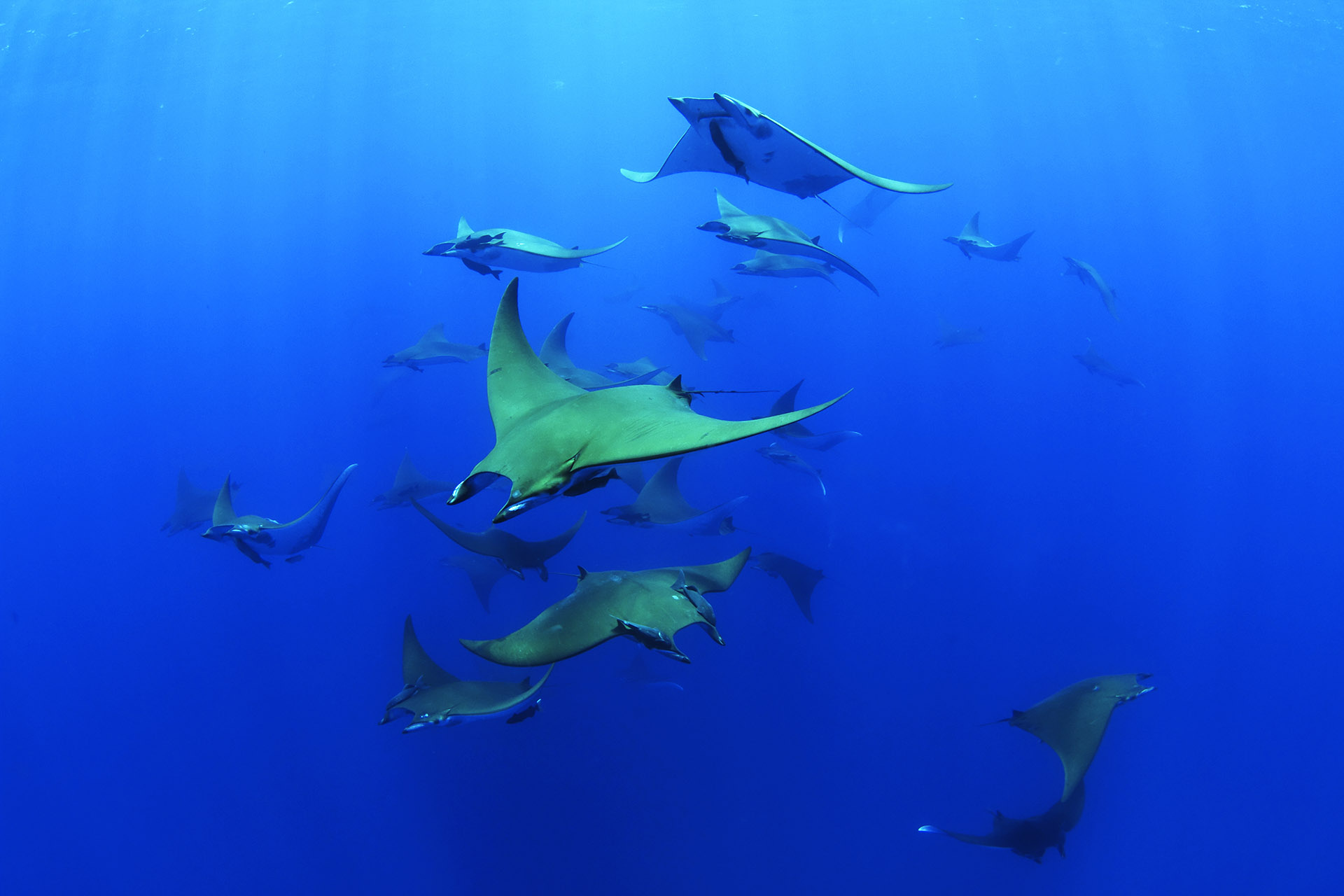
A school of 30+ Chilean devil rays at the seamount 'Ambrósio' in Santa Maria Island, Azores. Photo © Nuno Sá
The Ambrósio sea mount, in the archipelago of the Azores, is one of the places where Chilean devil rays come together and the only one where it is possible to see schools containing dozens of individuals at a distance of only three nautical miles from shore. However, these aggregations are seasonal (June to October) meaning they are not only spatially but also temporally restricted, which limits the opportunities of researchers to collect data on these rays greatly.
In order to overcome this and maximise the data collected, an underwater observatory prototype has been developed. The objective was to have a continuous monitoring technique that would allow information about the species to be collected even when no one was present. The observatory consists of a GoPro camera and intervalometer connected to an external energy source, all of which is placed inside an underwater camera housing with an external UV LED to prevent micro-organisms from accumulating on the lens. Capable of operating independently for about seven days, the observatory is set to capture a 10-minute time lapse every hour.
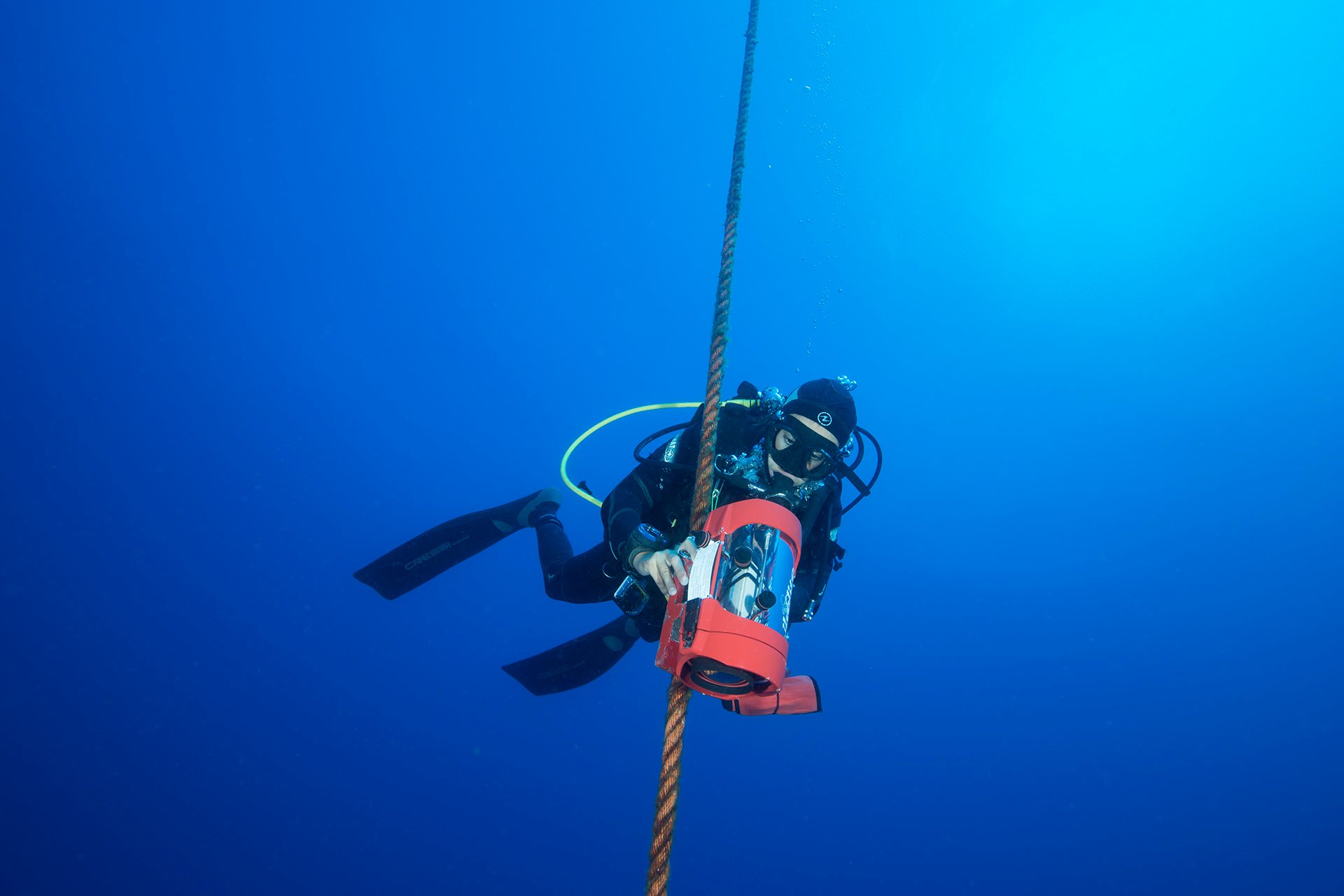
Project leader Ana Sobral attaches the observatory to a cable at a 30m depth. The cable links the top of the seamount to a buoy at the surface of the water. The buoy prevents the boats from anchoring at the top of the seamount and the cable allows divers to hang on while waiting in the blue for the mobulas to swim by. Photo © Daniel Van Duinkerken
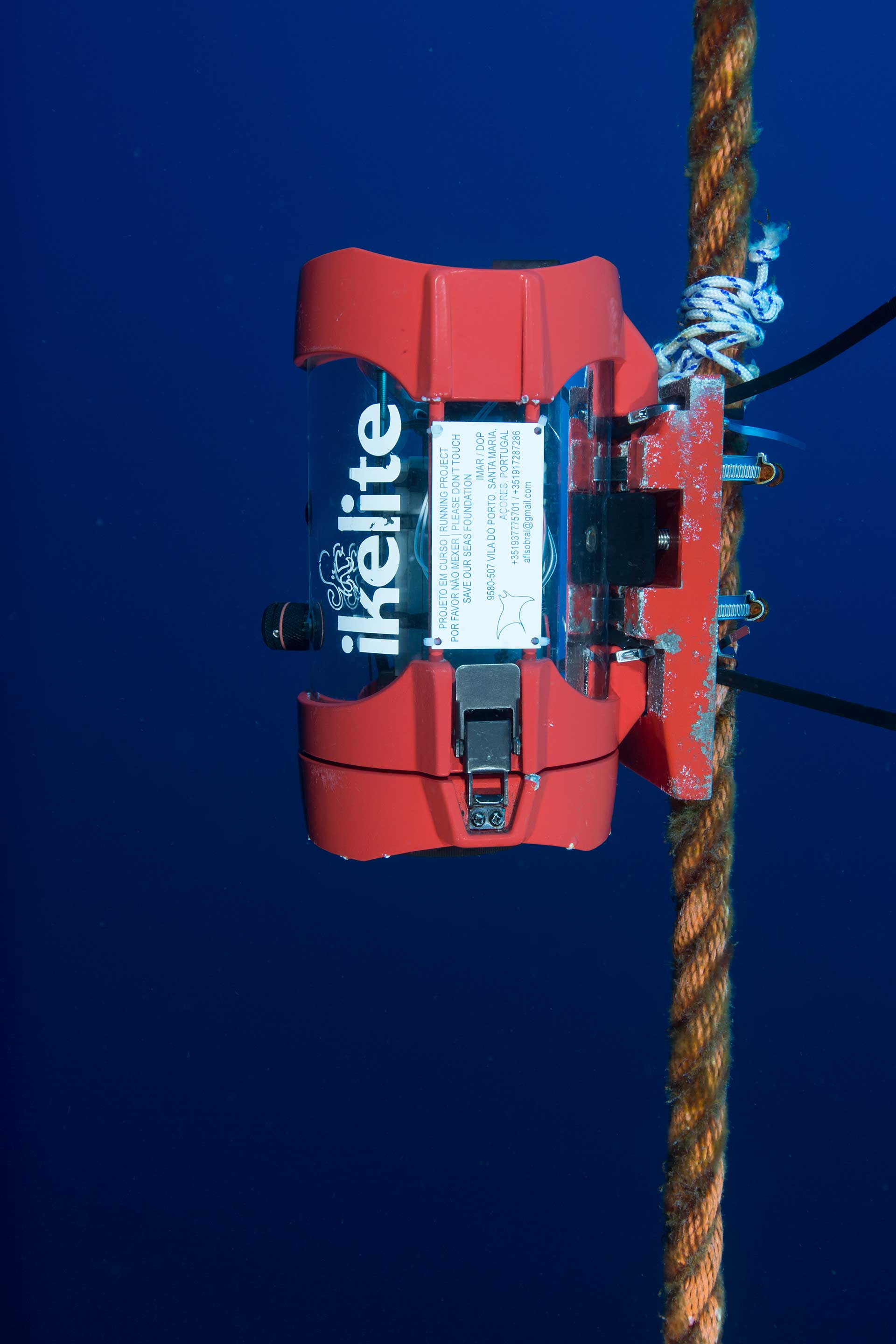
Programmable video observatory at the seamount 'Ambrósio' in Santa Maria Island, Azores. The observatory consists of a GoPro camera connected to an external battery inside an underwater housing. The camera is facing upwards to capture the presence/absence of Mobula rays at the seamount. Photo © Daniel Van Duinkerken
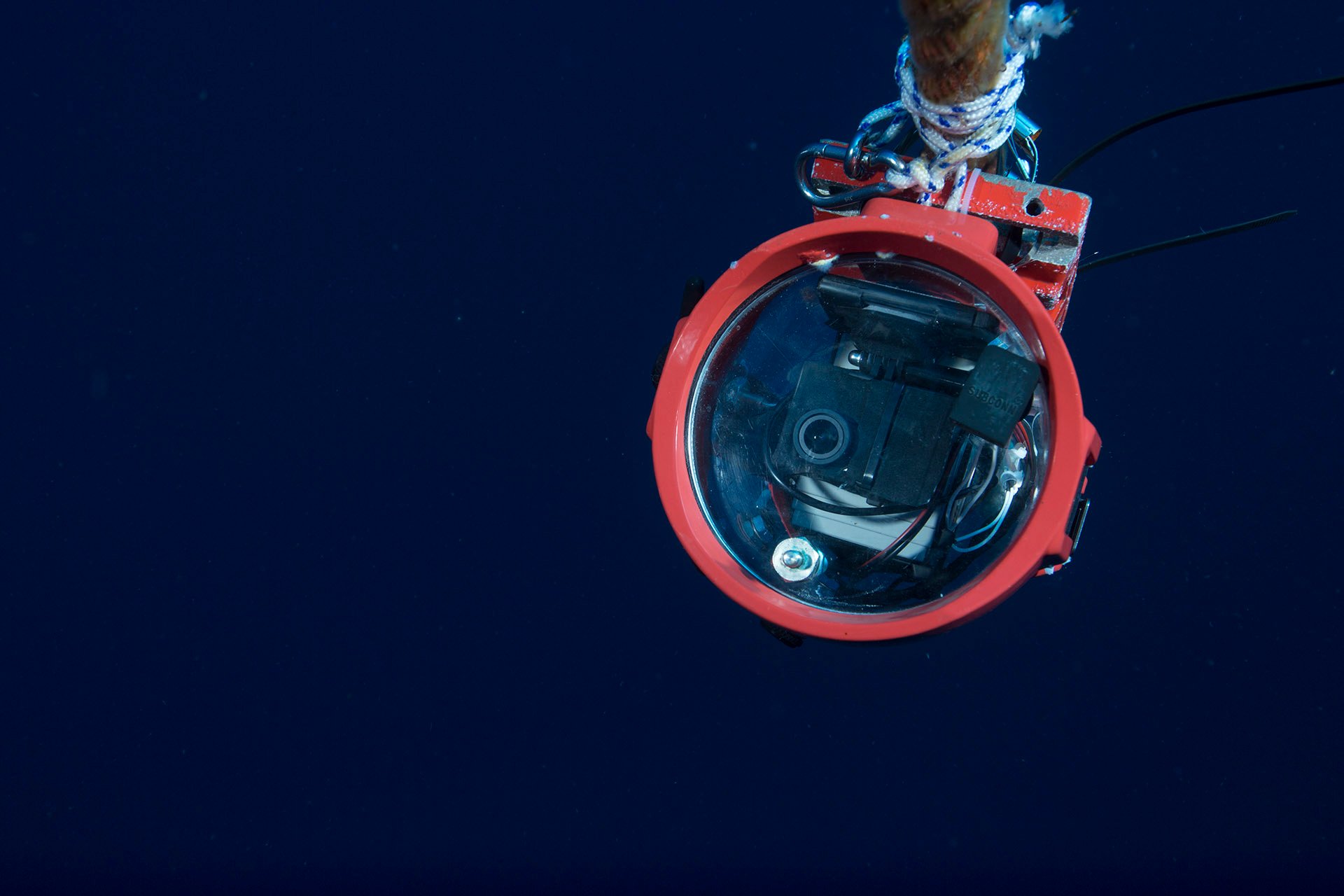
Video observatory at the seamount 'Ambrósio' in Santa Maria Island, Azores. This video observatory consists of a GoPro camera with an external power source, this system is programmable in order to be autonomous for several days. This technology will allow us to have a higher time coverage on the presence of the mobulas at the seamount. Photo © Daniel Van Duinkerken
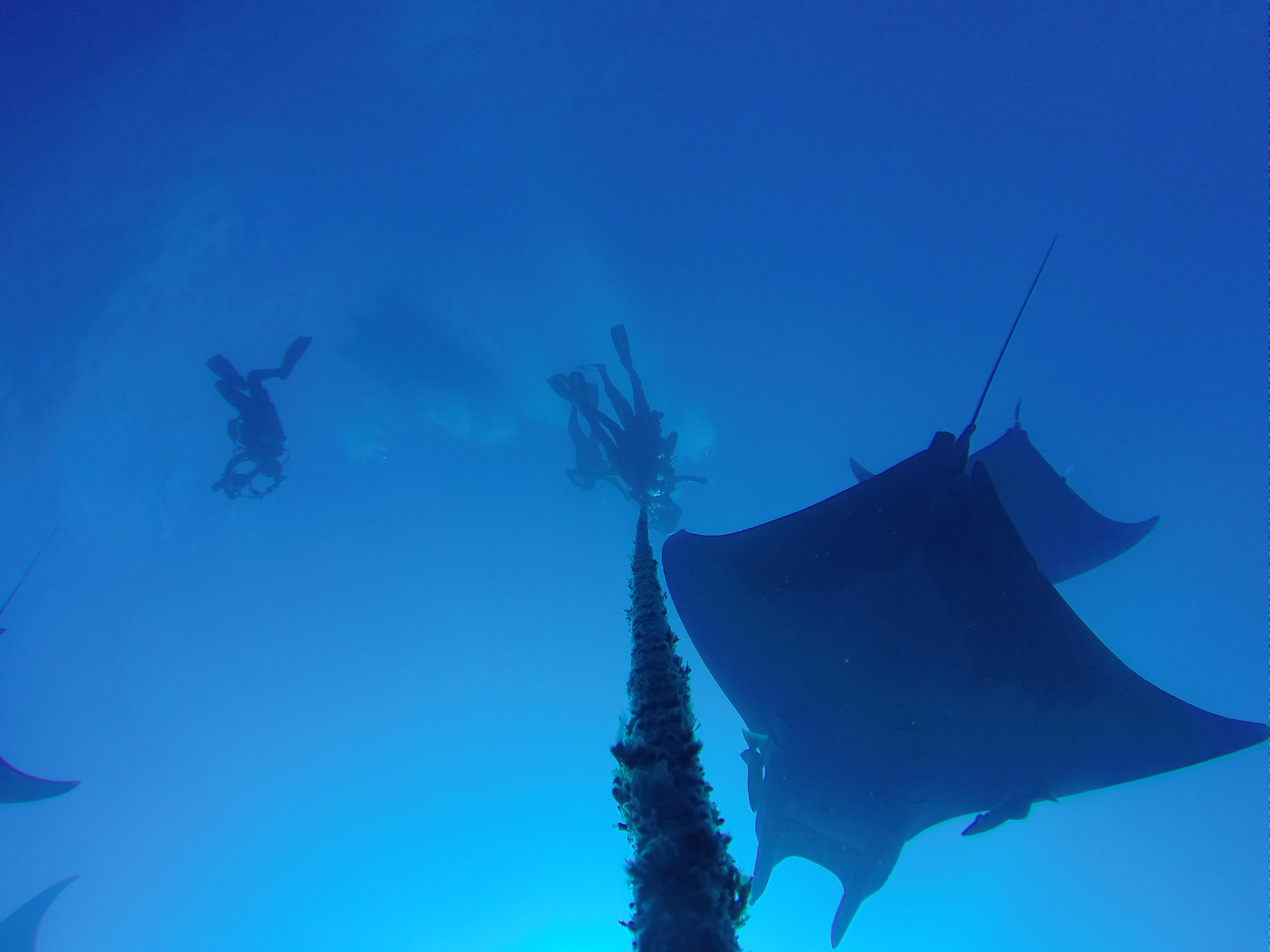
Example of image captured by the observatory. This image shows the presence of 4 Mobula tarapacana, 2 of them mature males and it is even possible to see the ventral pattern of one of the animals. There are, at least, two other species of Mobulids that can be seen in the Azores, Manta birostris and Mobula mobular. Photo © Ana Sobral
The rapid growth of the mobula diving industry in the region provides another way to increase the amount of data collected: citizen science. As well as being a really valuable alternative for obtaining relevant information, this approach raises awareness about Chilean devil rays in the public at large by enrolling people, in this case divers, in the collection of data about the occurrence and abundance of the species.
We also encourage people to send us their photos and videos of the rays, which can be used to identify individuals. How? Let me explain. The Chilean devil ray is the only Mobula ray that has a ventral pattern. Each pattern is thought to be unique to the individual, like a fingerprint. By checking photos of the patterns we can identify different individuals at different times and places and so ‘track’ their movements. The photos submitted by divers and professional photographers have enabled us to establish the first photographic database for a Mobula species.
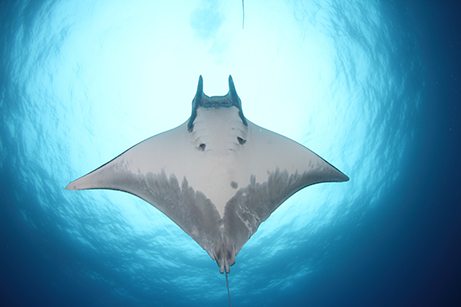
An adult male Chilean Devil ray showing it's ventral pattern. This species is the only Mobula species with a ventral pattern. Photos like this one can be used to ID individuals. Everyone can contribute by sending photos to the project 'Manta Catalog Azores', the first ever photo-ID database for a Mobula species. Photo © Nuno Sá
One of the things we have learnt from these techniques is that the rays visiting the Azores are all adults and they include many pregnant females. However, there are still a lot more questions to be answered. Where are the juveniles? Where do the females give birth? Do they gather here to mate? And many, many more…
Many mysteries still surround Chilean devil rays and they need to be solved urgently if we are to work towards the conservation of these fascinating creatures.
To learn more about or get involved in the photo-ID project
